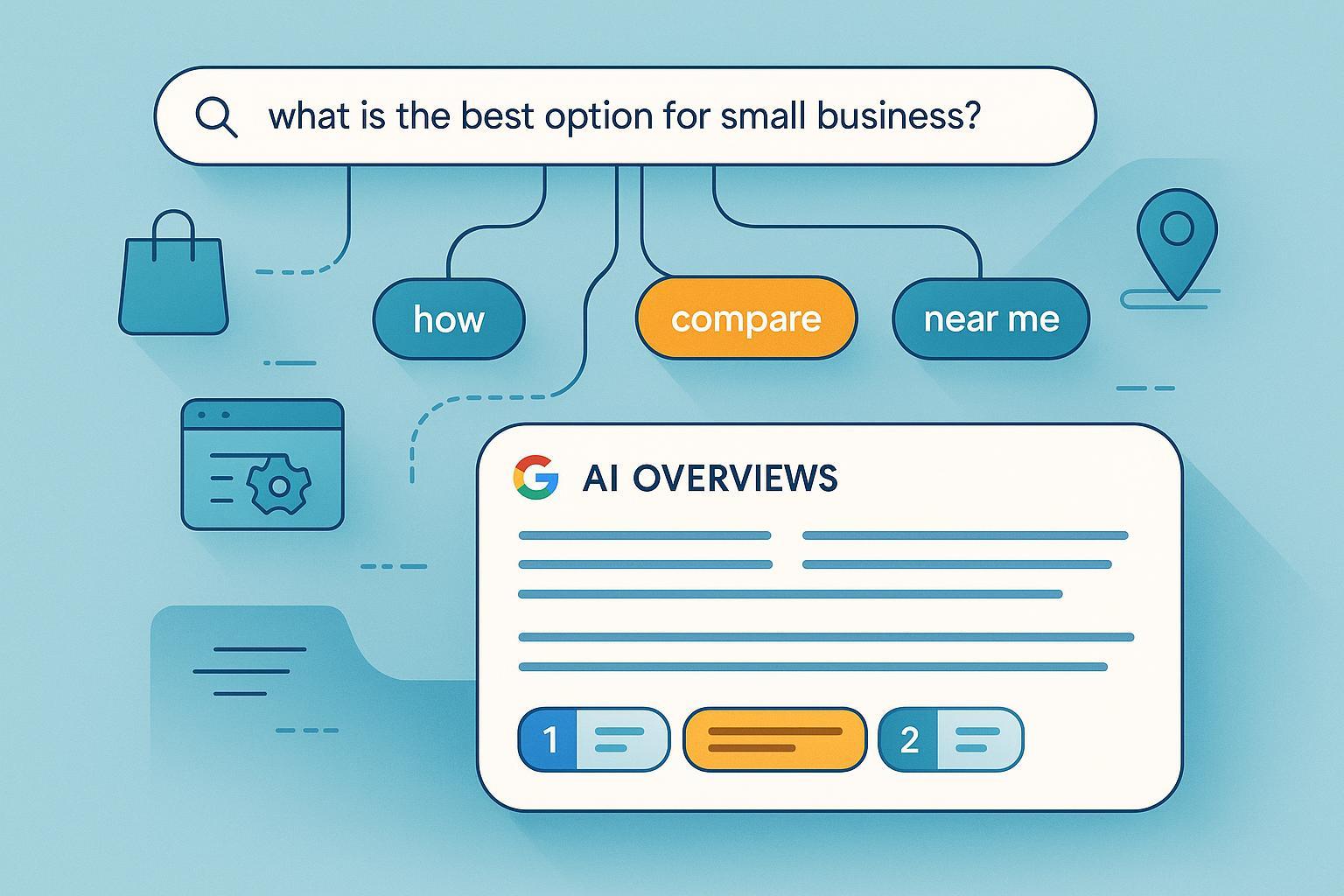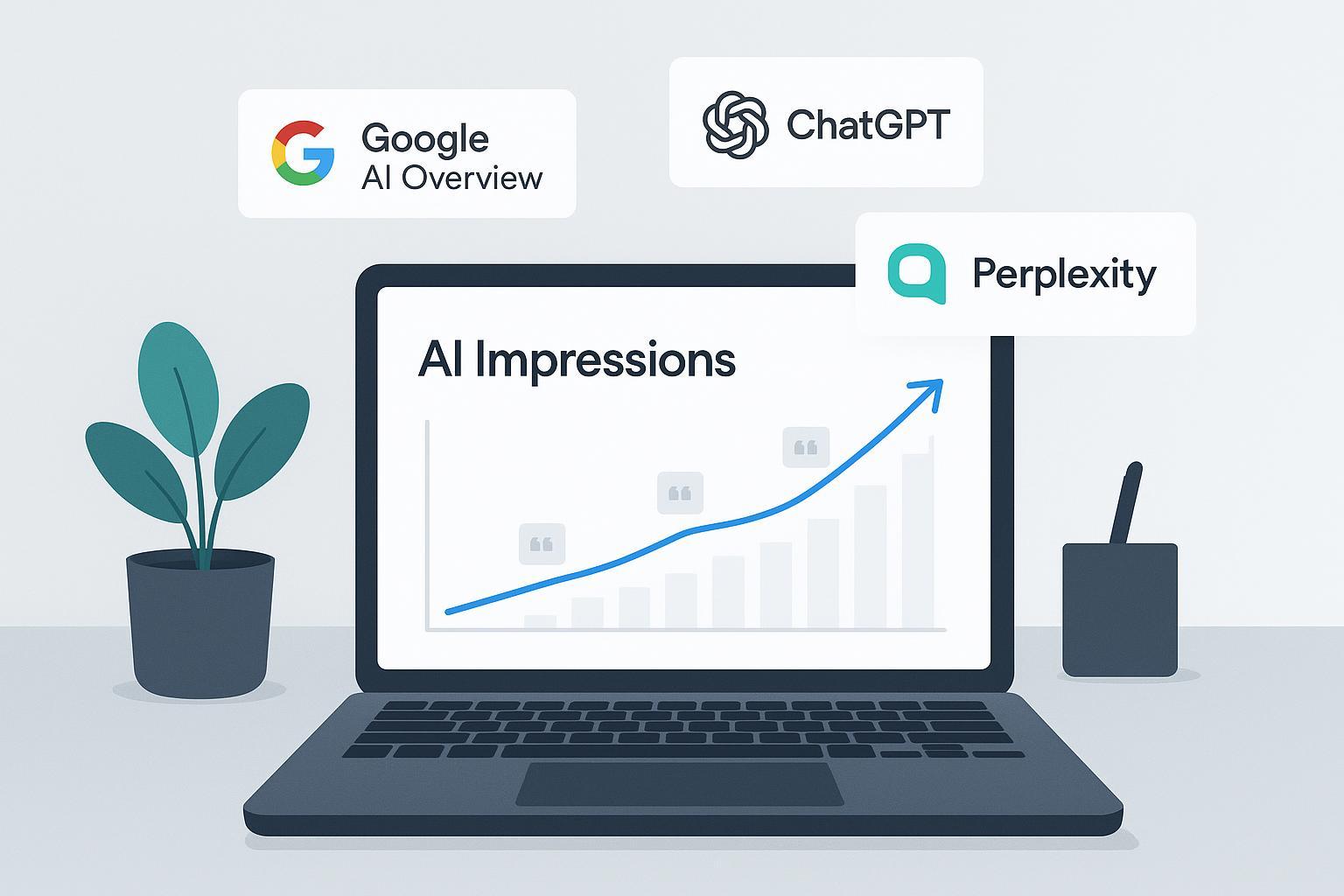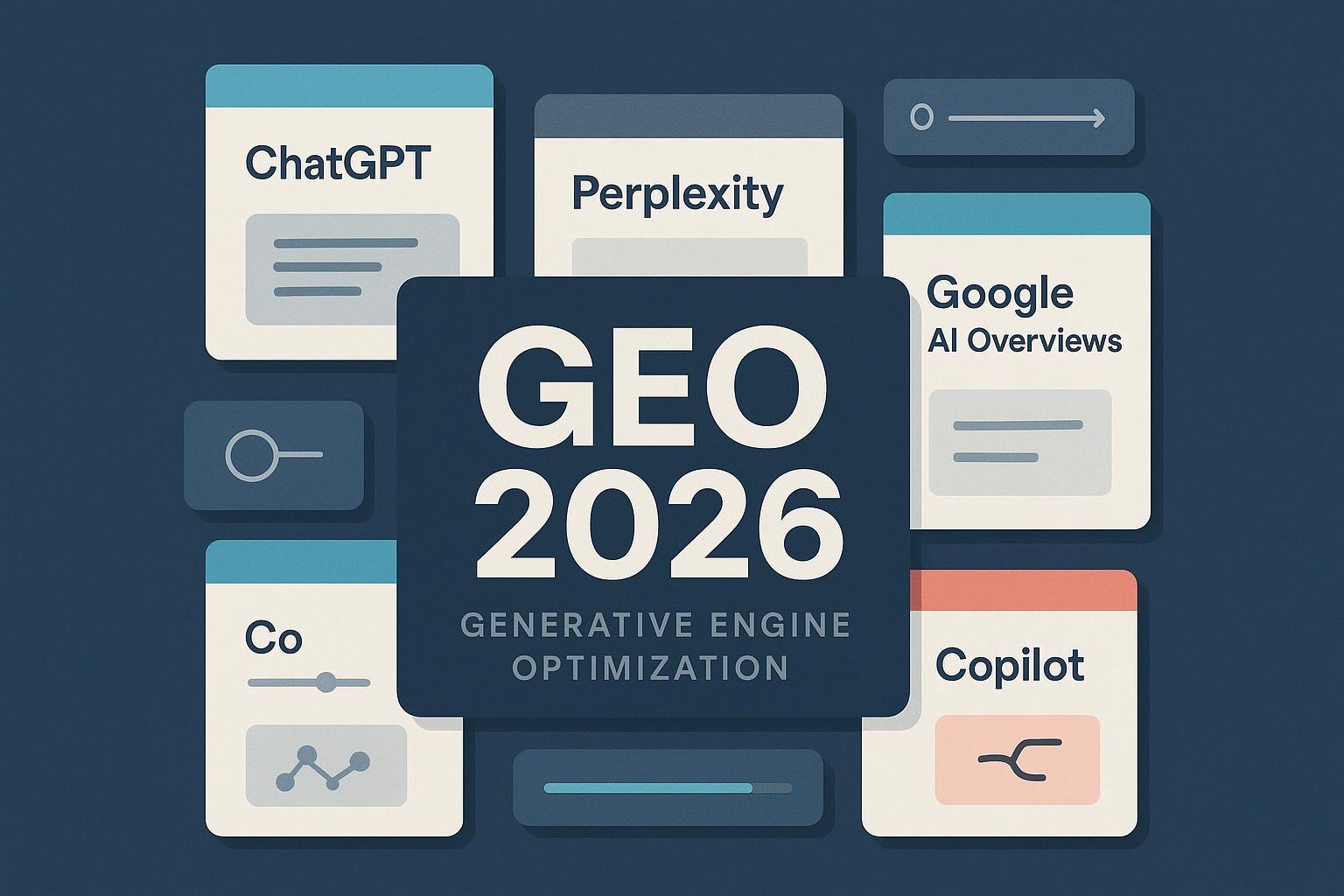Why Conversational Long-Tail Keywords Fuel GEO Success in 2025
Discover how conversational long-tail keywords drive GEO and AI Overview visibility in 2025. See 2025 research, impact data, and optimization tips.

Updated on 2025-10-05

Generative answers are reshaping search. As Google’s AI Overviews (GEO) mature, engines increasingly reward content that resolves multi‑intent, natural‑language questions clearly and credibly. That shifts strategy away from chasing head terms and toward building depth across conversational long‑tail queries that AIs can confidently synthesize and cite.
What changed in 2025: People are asking more complex questions
Google’s own 2025 communications framed the shift. In May, the company noted that people are bringing “more complex, longer and multimodal questions” to Search and called AI Overviews “one of the most successful launches in Search in the past decade,” adding that in major markets, the feature drove “over 10% increase in usage” for the query types where it appears (Google, May 2025). See the statement in the Google product blog (May 2025): AI in Search.
At the same time, Google’s guidance to creators emphasizes experience‑led, people‑first content and makes no promises about inclusion. The message is consistent: deliver unique, helpful answers and let systems determine when AI features are most useful. Read Google’s principles in the Search Central guidance on succeeding in AI search (May 2025).
The data: AI Overviews skew toward informational, longer queries
Independent 2025 datasets reinforce what marketers are seeing. Semrush’s U.S. study reported AI Overviews appeared in 13.14% of searches in March 2025 (up from 6.49% in January) and that informational intent dominated among AIO‑triggering queries (80% on desktop; 76% on mobile). The analysis used a 200,000‑keyword panel with intent/category coding. Details appear in the Semrush AI Overviews study (2025).
On the user side, Pew Research Center’s panel found that about 18% of Google searches in March 2025 produced an AI summary and that users were less likely to click links when an AI summary appeared—evidence that KPIs must expand beyond classic blue‑link clicks toward inclusion and citation visibility. Review the findings in Pew Research Center’s July 2025 analysis of AI summaries and clicks.
Practitioner trackers also observe higher trigger likelihood as queries get longer and more conversational. For directionality on query‑length effects, see the SE Ranking AI Overviews explainer (Jul 2025). Note that multipliers vary by dataset and method; treat them as directional rather than universal.
Finally, beware of inflated prevalence claims (e.g., 50%+ of queries). While some vendors and blogs report very high rates, methodologies are often opaque. In this article we prioritize transparent datasets like Semrush and Pew and cite their months/years for clarity.
Why this matters: Query shape beats raw volume in GEO
Conversational long‑tail queries capture how real users ask for help in AI‑first interfaces: multi‑intent, constraint‑rich, and often expecting a concise, structured answer. Two implications follow:
- Inclusion depends on answerability and extractability. Content that front‑loads a clear answer, then supports it with steps, comparisons, and citations, is easier for AI systems to summarize and attribute.
- Measurement must shift from rank to inclusion. Classic position tracking misses whether your brand is actually cited inside AI Overviews and other answer engines. Teams need to log appearances, attribution type, and competitor share.
This is why low‑volume, intent‑rich questions can punch above their weight: they map cleanly to GEO’s job-to-be-done—resolve a complex question quickly with trusted sources.
A practical workflow to win conversational long‑tail and GEO citations
Below is a repeatable, evidence‑aware workflow you can run by topic cluster. It acknowledges that structured data helps understanding but doesn’t guarantee inclusion.
- Mine conversational questions from real signals
- People Also Ask expansions and follow‑ups
- Internal site search logs and support tickets
- Sales call transcripts and CRM notes
- Community Q&A (Reddit, Stack Exchange) and social comments
- Convert findings into question clusters (jobs‑to‑be‑done)
- Group by intent variants: “how,” “why,” “compare,” “cost,” “near me,” “for [audience].”
- Include constraints: price/brand/specs, timeframe, location, device, expertise level.
- Author for extractability
- Lead with a 50–100‑word plain‑language answer; then provide steps, pros/cons, and examples.
- Use clean HTML, descriptive subheadings, lists/tables, and short paragraphs.
- Annotate where relevant with FAQ, HowTo, Author, and Organization schema; keep your local NAP consistent.
- Align with Google’s 2025 success principles in the Search Central guidance.
- Publish depth, not just one page
- Build interlinked question clusters to demonstrate topical authority.
- Add expert bylines and cite primary sources with dates; include original insights or data where possible.
- Monitor inclusion and iterate bi‑weekly
- Track which queries trigger GEO and whether your brand is cited (link vs. mention vs. absent).
- Compare included vs. excluded pages: structure, freshness, authority, and load speed.
- Expand clusters with follow‑up questions surfacing in PAA, site search, and support logs.
Example micro‑workflow in practice (neutral tooling)
- For logging and prioritization, teams often use a lightweight tracker for GEO inclusion and sentiment across engines. A dedicated platform like Geneo can centralize AI Overview/answer‑engine citations, query histories, and basic sentiment to inform the next sprint. Disclosure: Geneo is our product.
Category‑specific query examples to model
- B2B SaaS: “best SOC 2 compliance checklist for startups,” “how to implement zero‑trust in a hybrid environment.”
- Ecommerce: “best electric SUV for families under $40k tax credit,” “how to wash a merino wool sweater without shrinking.”
- Local services: “how much does a root canal cost in Austin without insurance,” “emergency plumber near me on a Sunday cost breakdown.”
Community‑driven citations matter
- AI Overviews frequently reference third‑party sources like communities and videos. Building helpful, non‑promotional contributions in the right threads can increase your surface area for citations. For tactics and examples, see our guide to driving AI search citations through Reddit communities.
Measurement that matches the moment: From rank to citation share
With users clicking less when AI summaries appear (Pew panel, March 2025), success metrics should reflect inclusion across answer surfaces, not just ranking on blue links. See the methodology and findings in Pew Research Center’s 2025 analysis of AI summaries and clicks.
A lightweight cross‑engine measurement plan
- Build a representative set of 20–50 conversational questions per topic.
- Test weekly across Google GEO/AI Mode, Perplexity, ChatGPT (with browsing), Copilot, and Gemini.
- Log for each query: whether an answer card appears; whether your brand is cited; whether the citation is a link vs. brand‑name mention; which competitors appear.
- Compute “citation share”: brand appearances divided by total question set, trended over time.
- Diagnose gaps by comparing included vs. excluded pages. Retest after updates.
To understand the evolving tool landscape and monitoring approaches for answer inclusion tracking, you can review our analysis in the Profound Review 2025 with an alternative recommendation. If you’re evaluating vendors for AI brand monitoring, this side‑by‑side Profound vs. Brandlight comparison outlines trade‑offs to consider.
Implementation checklist (and common pitfalls)
Content and structure
- Front‑load a concise answer; follow with steps, comparisons, and credible citations.
- Use schema to aid understanding; keep markup clean and consistent. Avoid thinking schema guarantees inclusion.
- Maintain expert bylines, publication dates, and authoritative sources with year and, when relevant, sample/geography.
Technical and UX
- Keep pages fast, mobile‑friendly, and scannable with descriptive headings.
- Clarify entities: product names, organizations, locations; ensure consistent NAP for local pages.
Cluster and authority
- Publish interlinked question clusters; add unique insights or light original research.
- Earn coverage beyond your site: community posts, helpful YouTube explainers, and partnerships.
Measurement and cadence
- Track inclusion and citation share weekly; expand clusters bi‑weekly with new follow‑ups.
- Time‑stamp any reported prevalence or performance metrics with dataset and month/year.
Common pitfalls to avoid
- Chasing head terms while neglecting query variations and follow‑ups.
- Over‑optimizing for markup while under‑investing in helpful, experience‑led content.
- Treating GEO as a one‑and‑done project instead of a system that requires iteration.
What’s next: A realistic outlook for Q4 2025–Q1 2026
Expect GEO to keep evolving in when and how it appears, with continued bias toward informational, multi‑intent questions. Google’s 2025 guidance centers on helpful, experience‑driven content—build question clusters that satisfy jobs‑to‑be‑done, structure for extractability, and strengthen authority signals. Industry analyses such as AMSIVE’s 2025 AEO guidance echo the same direction: focus on answerability and multi‑surface presence.
If you’re formalizing GEO measurement and iteration, consider piloting a 6–8 week program: set your cluster, instrument logging, publish structured answers, and track citation share over two refresh cycles. Tools that centralize cross‑engine citation monitoring—like Geneo—can help operationalize this without heavy spreadsheet overhead, especially for multi‑brand teams.
Notes on sources and interpretation
- Prevalence data varies by method. We prioritized transparent 2025 datasets from Google, Semrush, and Pew and avoided absolute guarantees about inclusion. For query‑length effects, treat practitioner metrics as directional.
Soft next step
- Want a neutral place to start? Stand up your cluster list this week, seed a simple inclusion log, and run one editorial sprint. If you need centralized tracking across Google GEO and other answer engines as your volume scales, you can evaluate Geneo alongside other vendors during vendor selection.





